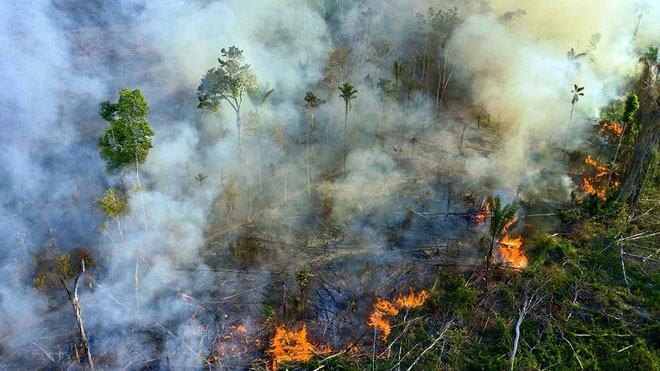By 2030, the Amazon rainforest is expected to lose up to 75% of its current coverage.
Estimates suggest that even though the remaining green areas are still relatively large, the Amazon rainforest has been pushed to its limits. The phenomenon of forest dieback is imminent.
With such a small area, the forest cannot produce enough moisture to form rain-generating clouds, leading to the most damaged patches of forest gradually transforming into seasonal dry forests, eventually becoming vast grasslands. As the forest continues to die, the amount of rainfall decreases, and with less rainfall, more forest areas succumb to dieback.
The consequences of this drying trend across the entire Amazon basin will occur at an alarming rate, accompanied by devastating destruction, resulting in a dramatic decline in biodiversity in the region.
The Amazon rainforest is home to approximately 10% of the known species on Earth, so localized extinctions here could trigger a “domino effect of extinction” throughout the entire ecosystem. All wild populations will be severely affected, and individuals within these populations will face greater challenges in finding food and mates.

Forest fires in the Amazon. (Photo: Howstuffworks).
Many species of plants and animals with potential for new medicines, foods, and various industrial applications will disappear before humans even become aware of their existence. However, the price we pay is far more profound and direct.
We will lose a range of environmental services that the Amazon rainforest has historically provided to humanity. As trees die, the forest soil that was once anchored by their roots is washed away into rivers, leading to more frequent flooding. Thirty million people, including about three million indigenous people, may be forced to leave the river basin.
Changes in humidity levels could also lead to reduced rainfall across much of South America, resulting in water shortages in megacities. Ironically, drought will occur even on agricultural lands created by deforestation, profoundly affecting food production in Brazil, Peru, Bolivia, and Paraguay.
Throughout the Holocene epoch (a geological period), the most crucial environmental service provided by the Amazon rainforest to humanity has been its ability to sequester over 100 billion tons of carbon in its forests. However, the number of forest fires each dry season is increasingly releasing carbon back into the atmosphere.
Simultaneously, the loss of greenery reduces the forests’ photosynthetic capacity, causing the amount of carbon absorbed each year to decline as well. As a result, the atmosphere receives additional carbon dioxide, significantly accelerating global warming.
By around 2030, at the ends of the Earth, the Arctic Ocean is predicted to experience its first completely ice-free summer, expanding the sea surface area in the Arctic. Even long-standing sea ice formed by thick layers of ice stacked together, sheltered in narrow bays, cannot withstand the rising temperatures. They begin to melt into water. Consequently, the kelp forests that cling to the surfaces beneath the ice are washed away into the ocean, impacting the entire Arctic food chain.
Moreover, the white color of ice reflects solar radiation back into space, so as the Earth’s ice diminishes year by year, the planet’s surface becomes less “white,” resulting in decreased light reflectivity and accelerating global warming. The Arctic has now lost its ability to cool the planet.


















































